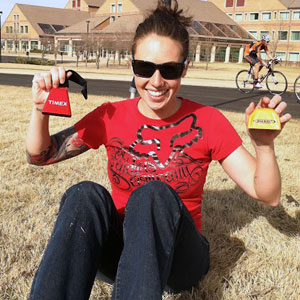Doug Casa on sudden death
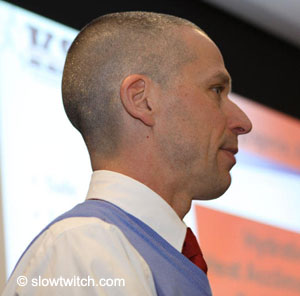
Doug Casa is in charge of the Korey Stringer Institute at the University of Connecticut and knows quite a bit about sudden death in sport. The Korey Stringer Institute has partnered with Team Timex the last few and we had a few words with Doug after the 2012 Team Timex Camp at the New York Giants training facility.
Slowtwitch: Thank you for your time Doug.
Doug Casa: It is my pleasure.
ST: How long have you been with the Korey Stringer Institute at the University of Connecticut?
Doug: I have been at UCONN as a professor since 1999, and have been with the Korey Stringer Institute since it was founded on April 23, 2010.
ST: Would you remind our readers about Korey Stringer and how the institute came about?
Doug: The Korey Stringer Institute was the brainchild of Kelci Stringer (Korey’s widow) and James Gould (Korey’s agent). They wanted to see some lasting, positive impact from the results of the legal battles following Korey’s death. They were supported by NFL Commissioner Roger Goodell to make sure this idea came to fruition. Commissioner Goodell has established himself as a leader who cares a great deal about athletic health issues, and the founding of the Korey Stringer Institute was an example of the focus by him and his colleagues at the NFL headquarters that athlete health and safety issues are of paramount importance. Kelci and James (Jimmy) reached out to me in January 2009 on the night of the settlement announcement with the NFL. We spent the next 15 months at the University of Connecticut developing the infrastructure to prepare for the April 2010 opening.
ST: Why at U Conn?
Doug: For seven years I assisted Kelci and her legal team in the litigation that followed the death of her husband. During that time the people I was dealing with realized the passion and commitment I had to the area of preventing sudden death in sport and enhancing athlete safety so they felt it was a natural fit when the settlement occurred to house the Korey Stringer Institute at the University of Connecticut. The infrastructure that was comprised of my colleagues and our grad students made the Institute very feasible.
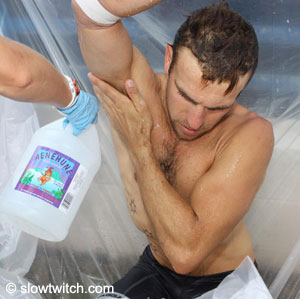
ST: How has your work changed?
Doug: I was before and still am a professor at the University of Connecticut, in addition to being the Chief Operating Officer of the Korey Stringer Institute (KSI). All of the things we have done since the opening of KSI I was doing prior to the opening, including research related to heat and hydration issues for athletes/preventing sudden death in sports, assisting elite athletes in identifying ways to enhance performance and develop individualized plans, advocacy regarding policy changes at the youth, high school, college, and professional levels of sport, education of key constituents that supervise athletes and provide medical care and mass media outreach.
But, since the opening of KSI we have been provided with a much greater forum to contribute in the different domains just mentioned. We have had a very large impact in a very short period of time.
ST: How common is sudden death in sport now?
Doug: Probably a lot more common than people think. The numbers over the past few years indicate that it occurs once every two days. The KSI is very focused on preventing death in sport and helping athletes maximize performance and safety during sport and physical activity.
ST: Is that a number that is declining, stable or growing when compared to 10 years ago?
Doug: Great question- the numbers are getting worse without question. An example, exertional heat stroke death had it’s worst five year block from 2005-2009 as compared to any other five year block in the past 35 years, in fact the amount was twice the five year average. The past two years project out to even more than 2005-2009. Exertional sickling issues at the high school and collegiate level are mounting as well.
ST: Where does triathlon fall in as far as you know?
Doug: Triathlon has had some major issues related to swim deaths over the past 5-7 years. While the official cause of death has often been listed as cardiac, they are almost certainly related to drowning (panic attacks, being hit by others, swum over by others, etc). The KSI advocates for more extensive safety precautions during the swim section of triathlons. These can include; more staggered starts, multiple start points, more underwater SCUBA monitoring, more above surface medical staff in boats and on surfboards, more extensive swim sweep teams, and an appropriate number of races for the facility and staff size.
ST: One would think that the run might be the culprit with it being later in the day with the mercury rising and the athletes already having worked out hard for a while.
Doug: Certainly a risk exists in these situations, but the races are usually staffed with outstanding medical personnel and they have appropriate EAP’s in place. While constant diligence is needed on the part of the medical staff the most pressing issue currently are those in the swim section, and if a person begins to drown the medical staff will not be around to save them. The race needs to have other contingencies in place to prevent these from occurring in the first place and to rescue these people who do need assistance (then bring them to the medical staff).
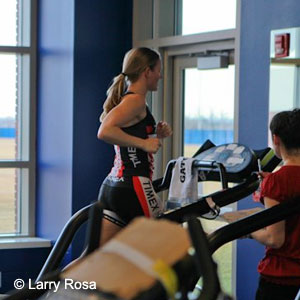
ST: When did the relationship with Timex start and who initiated it?
Doug: In the spring of 2010 Herbie Calves, the vice president for Marketing at Timex was reading a New York Times article about the opening of KSI. He had long wanted a scientific/medical team to assist Timex with product related research and with the athlete’s they sponsored. Being Timex is a Connecticut based company and KSI is housed at UCONN he thought this could have great potential. We first met in June 2010, and we solidified Timex as a corporate partner in the summer of 2011. In the short time Timex and KSI have partnered we have conducted research during summer training with the number one ranked collegiate ranked college soccer program (UCONN), worked with 35 elite triathletes in Kona at the World Championships in October 2011, assisted 40 of the Timex Multisport team members in February 2012 at the Timex Training Camp at the Timex Performance Center (the New York Giants training facility), and are about a two year project to assist the New York Giants. We will also be doing projects and assisting athletes at the Lake Placid Ironman in July 2012 and return to Kona in 2012.
ST: Is Kona one of the more exotic locations your team goes to?
Doug: I would say that was the highlight of my career in terms of destination. It was not hard to recruit grad students for that trip. I had been to Kona to work medical staff in the past, but it was a great deal of fun to bring my staff to enjoy the experience with me this time.
ST: Any interesting findings there?
Doug: Absolutely. Some blew us away. The findings we had of the degree of muscle damage after the race were off the charts and never really seen in the sport performance literature. These athletes put it all on the line in extreme environmental conditions and we now have numbers to back it up. While the details can’t be shared quite yet, this was just an example of some of the interesting findings.
ST: When do you think you can elaborate on these findings?
Doug: Becca Stearns, my PhD student who used the Kona project for her dissertation will be defending her results next month. We will finalize the publications during the summer of 2012. So, by Kona 2012 we may be able to fully release the results.
ST: What were you testing with the Timex athletes?
Doug: We created a sweat zone to develop individualized hydration plans. We established sweat rates, sweat electrolyte concentrations via whole-body wash-down technique, reviewed race day hydration habits, looked at sodium turnover in the diet/urine/sweat. As well as a few other items.
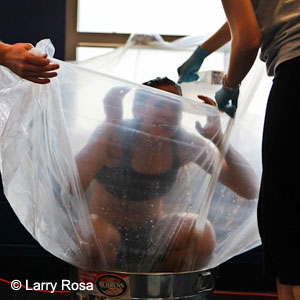
ST: With the salt loss tests you did at this year’s Team Timex camp, were some of the athletes surprised by the numbers?
Doug: Not too many surprises. The Timex Multisport Team is comprised of an elite group of athletes that are (generally speaking) finely in tune with their bodies. The numbers were confirmatory for many and surprising for a few. But, most important they provide more details for them and their coaches to develop individualized rehydration plans. The athletes also need to be aware that sweat rate is intensity, environment, and acclimatization status specific so they may have to check the sweat rate values periodically to stay on top of this, but the process of our testing I think was very educational and informative. The best part of the testing with the Timex Multisport Athletes was how grateful and interested they were for our efforts and product. I could have sat and interacted with them for days on end and never gotten bored. The fascinating questions, specific situations, and experiences made the knowledge we were obtaining so much fun to translate into meaningful information that had application.
ST: Any triathlons on your schedule?
Doug: Not to race. While I love to swim, I am not very good. My sport passion is trail running and has been most of my life. I am pretty good at it, and I have great trails right in my backyard here at rural UCONN. We will be at Lake Placid and Kona in 2012 to continue our work with triathletes.
ST: So what trail races do you have on your schedule?
Doug: I am training to have an important race in the end of August or early September. I have not settled on the race yet, but that is the plan. My preference is for trail races that last between 90 minutes and 3 hours.
ST: Anything else we should know?
Doug: The athletes had to carry around their urine jugs around this whole time (24 hours) as part of the testing at the Timex Training Camp. While at a social gala on Friday night a New York Giants Stadium security person thought all the orange jugs in the bathroom may have been a security breach. The security official quickly realized, after opening and smelling the contents of one of the jugs, that it was no security breach, and the geeky sport scientists got a good laugh.


